Contents
- 1 Independence Day History of India, Year Wise India Independence Day History:
- 2 India Independence Day History, Year wise history of Indian Independence:
- 3 India Independence Day History, Start of Independence Day History of India:
- 4 Britishers impact on Independence Day History of India, India Independence Day History:
- 5 Remarkable time in Independence Day History of India:
- 6 A new angle to the Independence Day History of India:
Independence Day History of India, Year Wise India Independence Day History:
Welcome readers. We understand how curious you are, to know the Independence Day History of India. So, here we have come up with the all-new and fresh post which will let you know the history of Indian Independence. You should know and understand how costly is your Independence. Just imagine how many sacrifices does the Indian Independence required. You should know the reason behind the happy faces celebrating 15 August as the Indian Independence Day 2022.
Here we have provided you complete details about the various incidents which took place during the freedom fight with the Britishers. We have made it much easier for you to understand as we have provided year-wise details which will let you understand Independence Day History of India much easier.
India Independence Day History, Year wise history of Indian Independence:
All this started more than 400 years ago. India was known as the “Sone ki Chidiya” at that time. After all these incidents, it felt like the “Chidiya” flew away somewhere to England with the Britishers. So, let’s begin the India Independence Day history.
1608: Arrival of East India Company
On 24th August, The East India Company came to India as traders for spices. Established itself as a trading company for doing business. They primarily traded in silk, tea, cotton, opium, and indigo dye. They continued to expand their business and slowly expanded it all over India.
Independence Day History of India
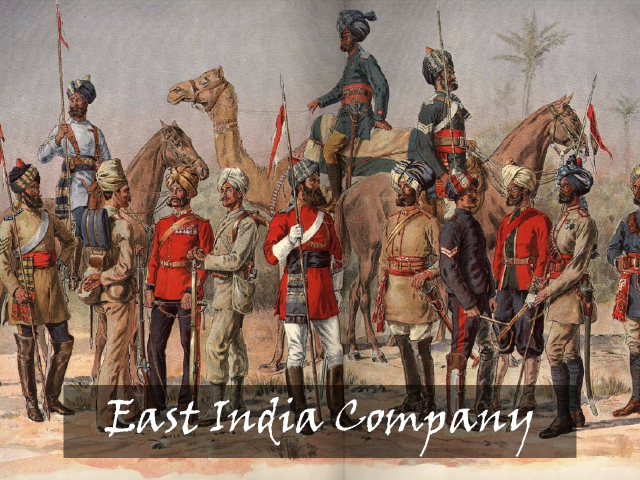
India Independence Day History
1806: Vellore Mutiny
It was the first instance by “Indian Sepoys” on a large scale against the East India Company. The incident took place on 10th July in Vellore, where around 200 Britishers were injured or dead.
1809: Treaty of Amritsar
On April 25, The East India Company representative Charles T. Metcalfe signed the first Treaty of Amritsar with Sikh kingdom head of Punjab, Ranjit Singh to build Indo-Sikh relations.
1814: Atmiya Sabha
Raja Ram Mohan Roy established Atmiya Sabha in Kolkata for conducting debate and discussions on Hindu Vedantism and similar subjects. It is considered as the start of the modern age in Kolkata.
1853: This year, The post services in India were started. Also the first railway service was started between Bombay and Thane this year.
India Independence Day History, Start of Independence Day History of India:
1855: Santhal Rebellion
The rebellion was started on June 30, by four murmu brothers named Sidhu, Kanhu, Chand, and Bhairav. It was done in Jharkhand(present-day) by Santhal people against the Zamindari system. The rebellion is also known as Santhal Hool.
India Independence Day History
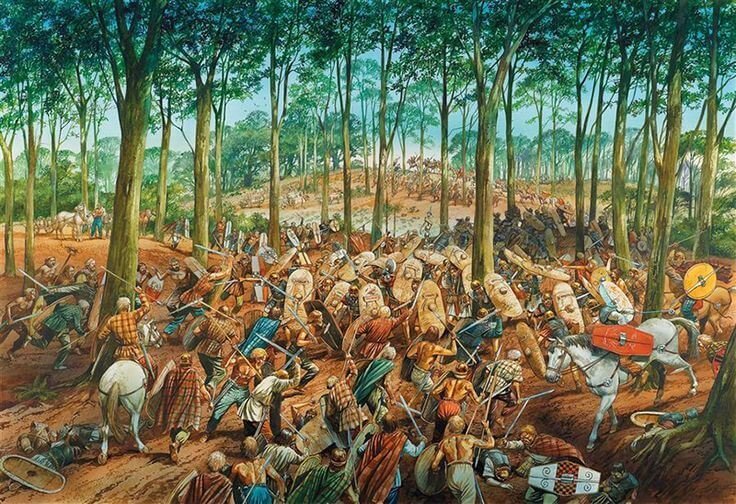
History of Indian Independence | Santhal Rebellion
History of Indian Independence Day
1857: The Revolt of 1857
It is one of the most remarkable incidents of the Independence Day History of India. The Indian Rebellion of 1857 started on 10th May near to old Delhi. The British emperors in the area were threatened so much for the first time. This revolution was not successful but succeded in cultivating patriotism in Indian people. It encouraged people to fight for Indian Independence.
History of Indian Independence

Independence Day History of India | Revolt of 1857
Independence Day History of India
1875: Arya Samaj was established on the 10th of April in Mumbai.
1877: Delhi Durbar first time
1885: The Indian National Congress was established on 28 December.
1899: “Mitra Mela” was established by V.D. Savarkar in Nasik.
1902: Anushilan Samiti
A Bengali-Indian organization that was formed for Indian Independence and to end the British Rule.
1903: On 11 December, the British expedition to Tibet took place. Also, this year Delhi Durbar second time was done.
Britishers impact on Independence Day History of India, India Independence Day History:
1905: Partition of Bengal
This incident is a good example of Britisher’s Divide and Rule policy. It was announced on July 20 and on 16 October, large Muslim eastern areas and large Hindu western areas were separated. The Eastern region is now known as Bangladesh. The western is known as West Bengal.
1906: Jugantar and Muslim League formed in Dacca.
1908: Alipore Bomb Case
Also known as Muraripukur conspiracy. The main accused was Aurobindo Ghosh and his brother. It was held by the Indian Nationalists of the Anushilan Samiti against the British Raj. Aurobindo Ghosh, Barin Ghosh, and other 37 nationalists of Anushilan Samiti were involved.
1909: Morley-Minto Reforms
Also known as the Indian Councils Act 1909. It was an act defined by the parliament of the United Kingdom to limit the increase in the involvement of Indians in British Indian governance.
1911: British Government changed the capital city from Calcutta to Delhi. Also Delhi Durbar third time took place this year.
1912: Delhi Conspiracy Case.
1913: Gadar Party formed in the United States. It was dissolved later in 1948.
1914: Hindu–German Conspiracy
This was a series of the plan which took place between 1914 to 1917. It was done by Indian nationalists against the Britishers during world war 1 to attempt Pan-India Rebellion.
Remarkable time in Independence Day History of India:
1915: Mahatma Gandhi returns to India
This is the crucial year in the Independence Day History of India. In this year, Mahatma Gandhi, one of the greatest freedom fighters returned to India at the request of Gopal Krishna Gokhale.
1916: Lucknow Pact.
1917: Champaran Satyagraha
The very first satyagraha led by Mahatma Gandhi after he returned from South Africa. Champaran Satyagraha Movement is considered a historically important movement for Indian Independence.
History of Indian Independence
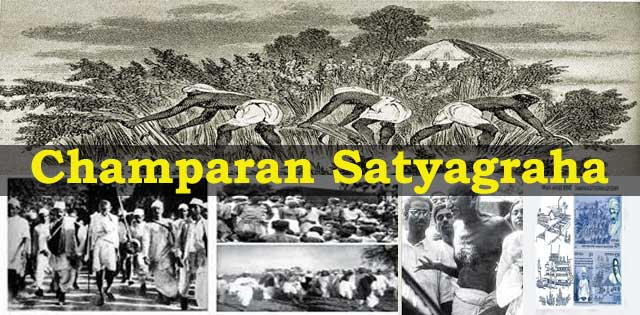
India Independence Day History | Champaran Satyagraha
India Independence Day History
1918: Kheda Satyagraha
It was started in the Kheda district of Gujarat in 1918. It was the second satyagraha movement by Mahatma Gandhi and an important part of the Independence Day History of India.
1919: Jallianwala Bagh Massacre
Also known as the Amritsar Massacre, took place on April 13th, 1919. Many Indian villagers gathered in the bagh for the celebration of Baisakhi. General Dyer ordered firing on civilians to the British Indian Army. The day was the deadliest in the history of Indian Independence. More than 1000’s of people got injured and around 400 people died including men and women.
History of Indian Independence
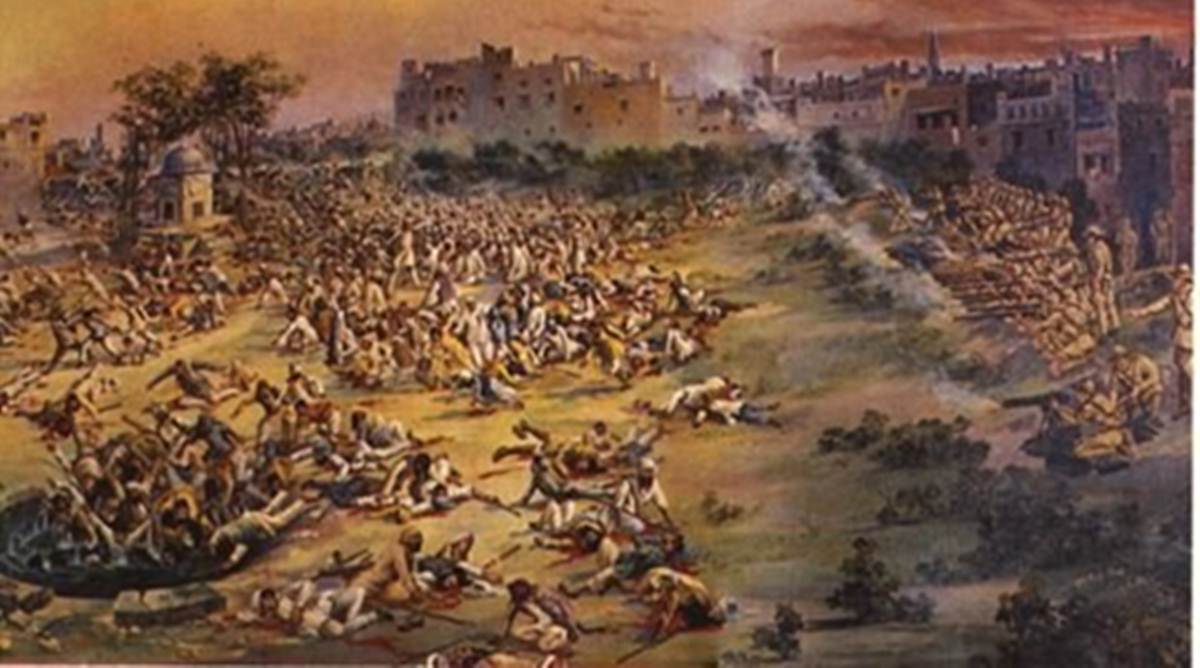
Independence Day History of India | Jallianwala Bagh Massacre
Independence Day History of India
1920: Non-Cooperation movement
Mahatma Gandhi launched the movement on 4th September 1920. It aimed to achieve full independence and self-governance following Rowlatt Act and Jallianwala Bagh incident. Khilafat movement was also started in the year 1920.
1922: Chauri-Chaura Incident
The incident took place in Gorakhpur(UP) on 5th February 1922. A large group of protesters participating in the Non-Cooperation movement clashed with the British police which led to the death of 3 civilians and 22 policemen.
1924: Hindustan Socialist Republican Association is formed
1925: Kakori conspiracy
1927: Simon Commission
1928: Bardoli Satyagraha
1929: Purna Swaraj
This year, Central Assembly was Bombed by Bhagat Singh and Batukeshwar Dutt. Also, the Indian National Congress promulgated the Declaration of Independence of India on 19th December 1929.
A new angle to the Independence Day History of India:
1930: Salt Satyagraha, Civil disobedience movement, Dandi march
Started on 12th March 1930, the 24-day Dandi march ended on 6th April. It was the start of the Non-violent civil disobedience movement by Mahatma Gandhi. It was a protest against the British Salt monopoly and tax resistance. The 1st Round-Table conference held this year.
India Independence Day History

India Independence Day History | Dandi March
India Independence Day History
1931: Gandhi–Irwin Pact, Bhagat Singh, Rajguru, and Sukhdev Martyred this year.
1932: Poona Pact, Communal Award, and 3rd Round Table Conference held.
1935: Government of India Act 1935.
1937: Indian provincial elections.
1939: All India Forward Bloc was Established by Subhas Chandra Bose.
1940: Lahore Resolution, August offer 1940.
1942: Quit India Movement
It is also known as the August movement. The movement was launched by Mahatma Gandhi on 8th August 1942, at the Bombay session of All India Congress Committee during the 2nd World War. Aim of the movement was to bring Indian British Rule to an end and send Britishers back to their territory. Mahatma Gandhi gave the slogan “Do or Die” in this movement. Indian National Army was established by Subhash Chandra Bose in this year.
History of Indian Independence
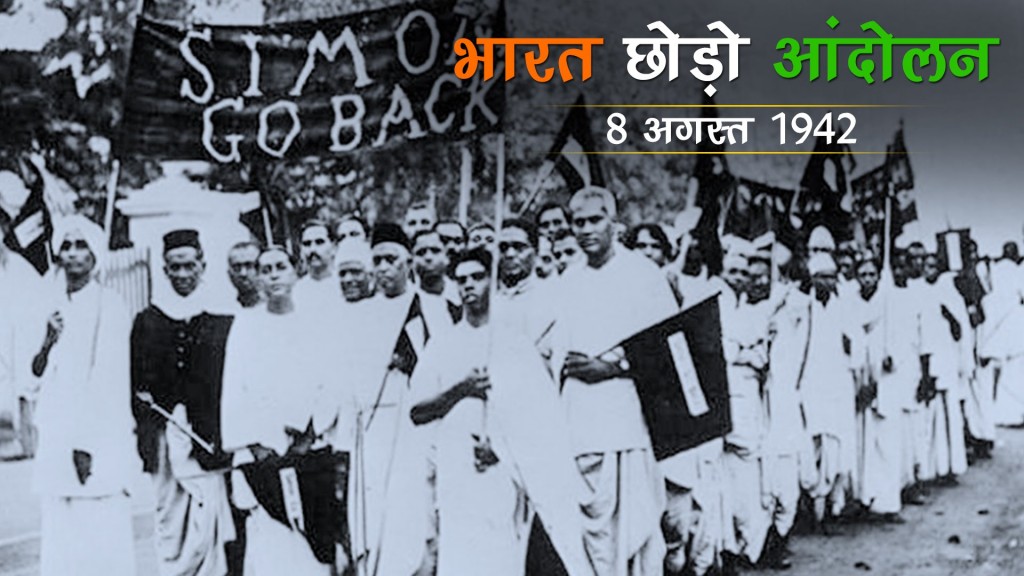
History of Indian Independence | Quit India Movement
History of Indian Independence
1943: Arzi Hukumat-e-Azad Hind, the Provisional Government of Free India formed by Netaji.
1944: Subhash Chandra Bose calls Mahatma Gandhi as the Father of the Nation.
1945: Wavell Plan, Simla Conference.
1946: Royal Indian Navy Mutiny, Cabinet Mission, Direct Action Day/Great Calcutta Killings.
1947: The Indian Independence
Here comes the most awaited day of the freedom fighters and all the Indians. British Government announced the Indian Independence Act 1947. Partition of India was done and Pakistan became an independent country on 14 August 1947. And finally, India got freedom from the British Raj. In this way, India became independent traveling a very long journey and various sacrifices.
Do you want some special wishes for your dear ones on the occasion of Independence Day? Check out our website for Independence Day Wishes 2022. You can also get interesting Independence Day Speeches to deliver in various seminars.
Other Resources: Wikipedia

